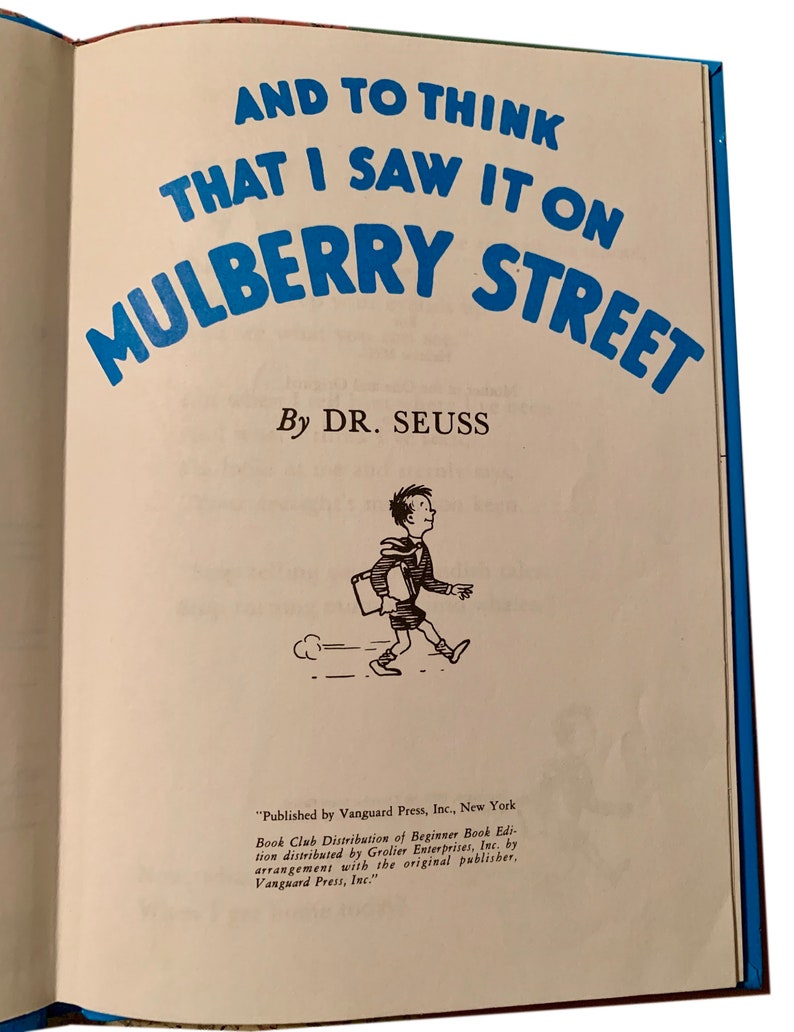

Geisel's popular campaign featured the line "Quick, Henry, the Flit!" He had also made some forays into book publishing: for Viking Press in 1931 he illustrated Boners and More Boners, collections of quotations from children's school papers. He had an established and prosperous career in advertising, including a contract with Standard Oil for Flit bug spray. Geisel was 33 and had ten years of experience in cartooning, illustrating and advertising when he began work on Mulberry Street. but a plain horse and wagon on Mulberry Street". However, when his father questions him about what he saw on his way home, his face turns red and he says, "Nothing . Now almost home, he snaps back to reality and rushes up the front steps, eager to tell his father his imagined story. The scene becomes a parade, as he then imagines a grandstand filled with the mayor and aldermen an airplane dropping confetti and, in the final incarnation of the scene, a Chinese man, a magician pulling rabbits out of a hat, and a man with a ten-foot beard.


Marco's realization that Mulberry Street intersects with Bliss Street leads him to imagine a group of police escorts. The wagon changes to a chariot, then a sled, then a cart holding a brass band. He imagines the horse is first a zebra, then a reindeer, then an elephant, and finally, an elephant helped by two giraffes. To make his story more interesting, Marco imagines a progressively more elaborate scene. However, the only thing Marco has seen on his walk is a horse pulling a wagon on Mulberry Street. The rhythm of the ship's engines captivated him and inspired the book's signature lines: Geisel conceived the core of the book aboard a ship in 1936, returning from a European vacation with his wife. However, when he arrives home, he decides instead to tell his father what he actually saw-a simple horse and wagon. First published by Vanguard Press in 1937, the story follows a boy named Marco, who describes a parade of imaginary people and vehicles traveling along a road, Mulberry Street, in an elaborate fantasy story he dreams up to tell his father at the end of his walk. Seuss book And to Think That I Saw It on Mulberry StreetĪnd to Think That I Saw It on Mulberry Street is Theodor Seuss Geisel's first children's book published under the pen name Dr.


 0 kommentar(er)
0 kommentar(er)
